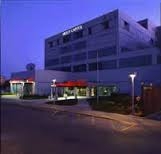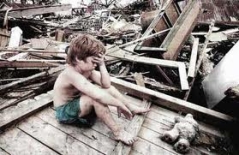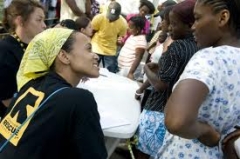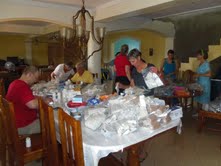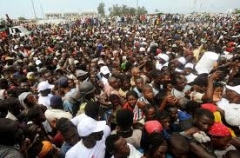Standing in the ER at Mercy Capitol in Des Moines, IA in late August, 2005, I watched the coverage on TV as Katrina moved down upon New Orleans. Mostly, I stood there amazed at the tales of how many people remained, certain they would be rescued. Suppinated palms, waiting for a handout. They had DAYS, days in advance warning of the category 5 hurricane what would devastate their city, that city which rested below sea level. Um, how could anyone there expect to remain dry? This is not a rhetorical question. How far could I walk in days, knowing that hell was soon to be unleashed upon my sub-sea-level home? With just my thumb and a strong will, I am pretty sure I could be standing upon Pikes Peak with a warning that fair.
A national call to help those devastated by the storm rang out, and our intensive care unit wanted to send a representative, along with a team of other nurses and doctors to lend a hand. I wanted to go. I talked with my wife about going, but our supervisor for the ICU chose Bob to go instead. Crud. I would have to travel vicariously and eagerly soak up details from my friend Bob when he returned. This call sparked something inside me–a call to serve.
Fast forward eight years and my family is living in Wisconsin, attending a new church. An announcement is made in church that a program called Schools4Haiti will be organizing a medical mission to rural Haiti to visit and treat orphans. There was no question–I knew I was going. Sara must have known this, seen it in my eyes, known my heart. Why Haiti? I felt called to serve there. She simply said “you should go.” I texted my brother the ER doc, right there in church. Medical mission to Haiti in July–want to go? “Yes. What dates?” came his very quick reply. It was settled then. I got the itinerary from the others to coordinate flight information and bought my ticket. I was pretty sure I wanted to arrive in Port au Prince with the group and leave with the group.
Most of the group met up at a hotel near O’Hare and took stock in the medical supplies we were taking with. Our arrival in the late afternoon was strategic–customs would be tired and weary and more likely to wave the group through, rather than rifle through our bags and confiscate supplies that were intended to do good for the orphans. That plan worked.
Before I ever visited the Big Apple, someone offered a piece of sage advice: “just get used to streams and streams of people, everywhere you go, no matter what time of day it is.” A similar suggestion was made of landing in Port au Prince. Flying over Haiti I surmised that there was short, scrubby jungle everywhere and the entire nation appeared to be void of rural life. I would later come to understand that I was just not able to see the huts below the canopy of the trees. Ten million walked within Haiti’s boundaries–about 35 people per square acre, and that seemed like a conservative estimate.
I would soon discover that everyone is a salesman in Haiti, a service to offer or goods to barter with. Trash everywhere. Graffiti. Earthquake damage. The city reeked with a diffuse, acrid smell of smoke no matter where we went. How many people can you fit in the back of a Haitian truck? One more. On the way to our accommodations outside of Mirebalais, we were soaked in a monsoon rain while jam-packed in the bed of a pickup, dusk upon us. I remember thinking “I am from small-town Wisconsin and I am riding in the back of a pickup in rural Haiti, caught in a monsoon and soaked to the bone as night is falling. How did I get here?!” I chuckled at my circumstance while doing my part to hold down the corner of the blue tarp that wanted to dance in the wind.
We arrived after dark, crossing a raging stream to pull into the New Life International compound. Prior to leaving I imagined staying in some tiny hut, co-mingling with nature, squatting to answer nature’s call, no regular meals or running water, and returning half-dead with malaria and intractable diarrhea. Instead, there was a male dorm and a female dorm, running water, air-conditioning at night so the mosquitoes could not reach us, armed guards to watch over us, a hot breakfast and supper, with packed lunches sent along with us while seeing the orphans during the day. Okay. Not bad. This might not involve the suffering I thought we would have to endure. We would be living like Americans and not so much like most of Haiti. Except for the tarantulas–those were the size of small plates. We weren’t sure how they sneaked into our rooms on occasion. I became the designated tarantula-ridder.
(more on Haiti and mission work to come)…
